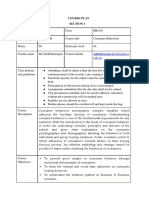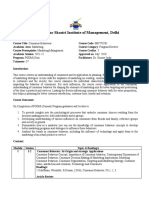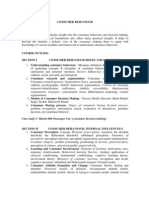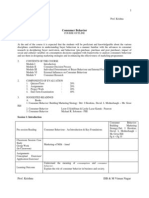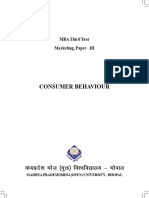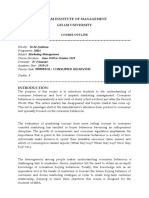0% found this document useful (0 votes)
23 views7 pagesConsumer Behaviour
The document outlines a course on consumer behavior for postgraduate students. It details the course objectives, which are to understand concepts and frameworks relevant to marketing decision making, introduce tools for consumer research and insight gathering, and develop skills for creating marketing strategies. It outlines the topics to be covered, including consumer decision making, variations in purchase and use across categories, adoption of innovations, using behavioral data for segmentation and strategy, and understanding individual self and lifestyles for marketing.
Uploaded by
Ishan MaheshwariCopyright
© © All Rights Reserved
We take content rights seriously. If you suspect this is your content, claim it here.
Available Formats
Download as DOC, PDF, TXT or read online on Scribd
0% found this document useful (0 votes)
23 views7 pagesConsumer Behaviour
The document outlines a course on consumer behavior for postgraduate students. It details the course objectives, which are to understand concepts and frameworks relevant to marketing decision making, introduce tools for consumer research and insight gathering, and develop skills for creating marketing strategies. It outlines the topics to be covered, including consumer decision making, variations in purchase and use across categories, adoption of innovations, using behavioral data for segmentation and strategy, and understanding individual self and lifestyles for marketing.
Uploaded by
Ishan MaheshwariCopyright
© © All Rights Reserved
We take content rights seriously. If you suspect this is your content, claim it here.
Available Formats
Download as DOC, PDF, TXT or read online on Scribd
/ 7



